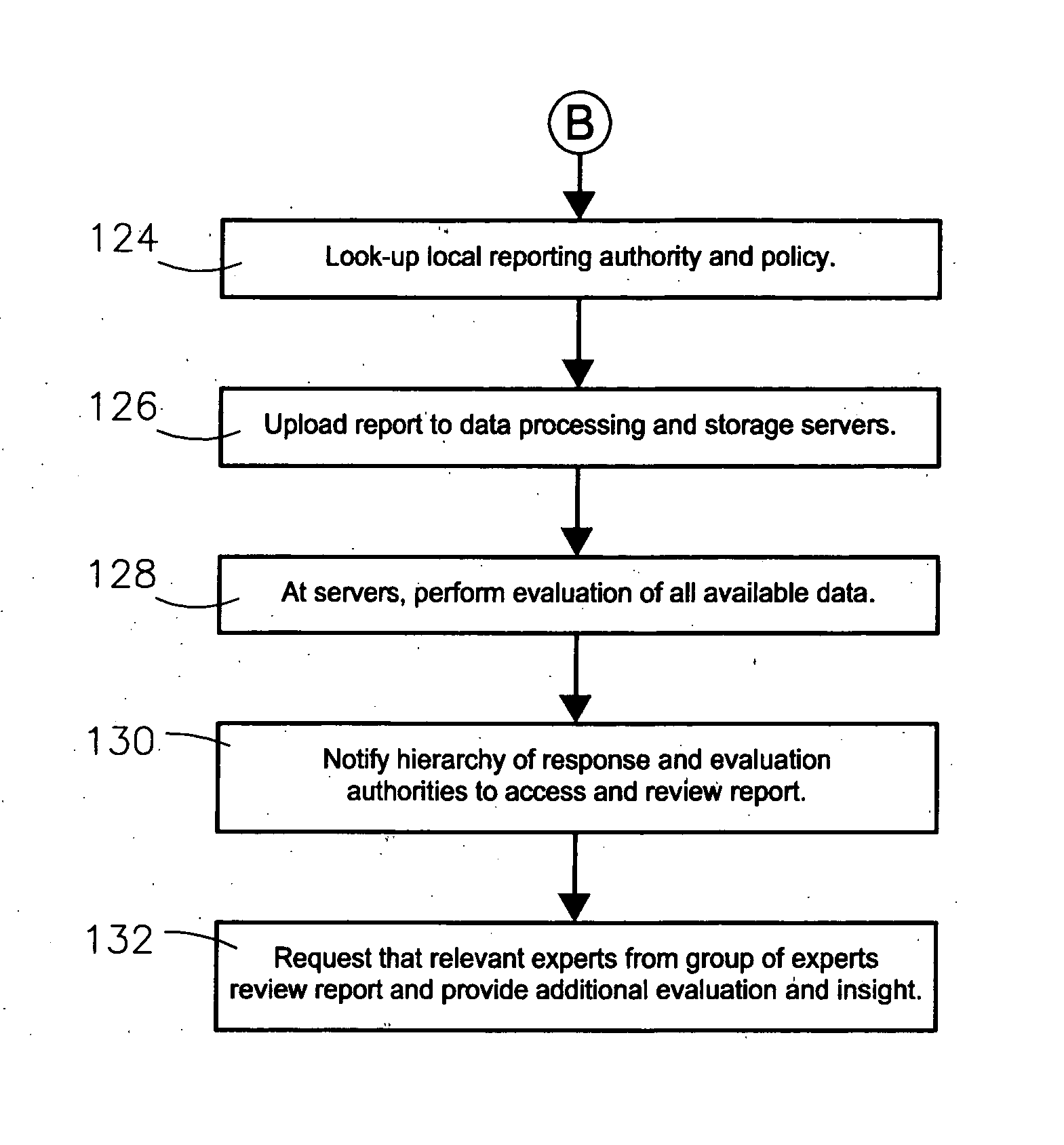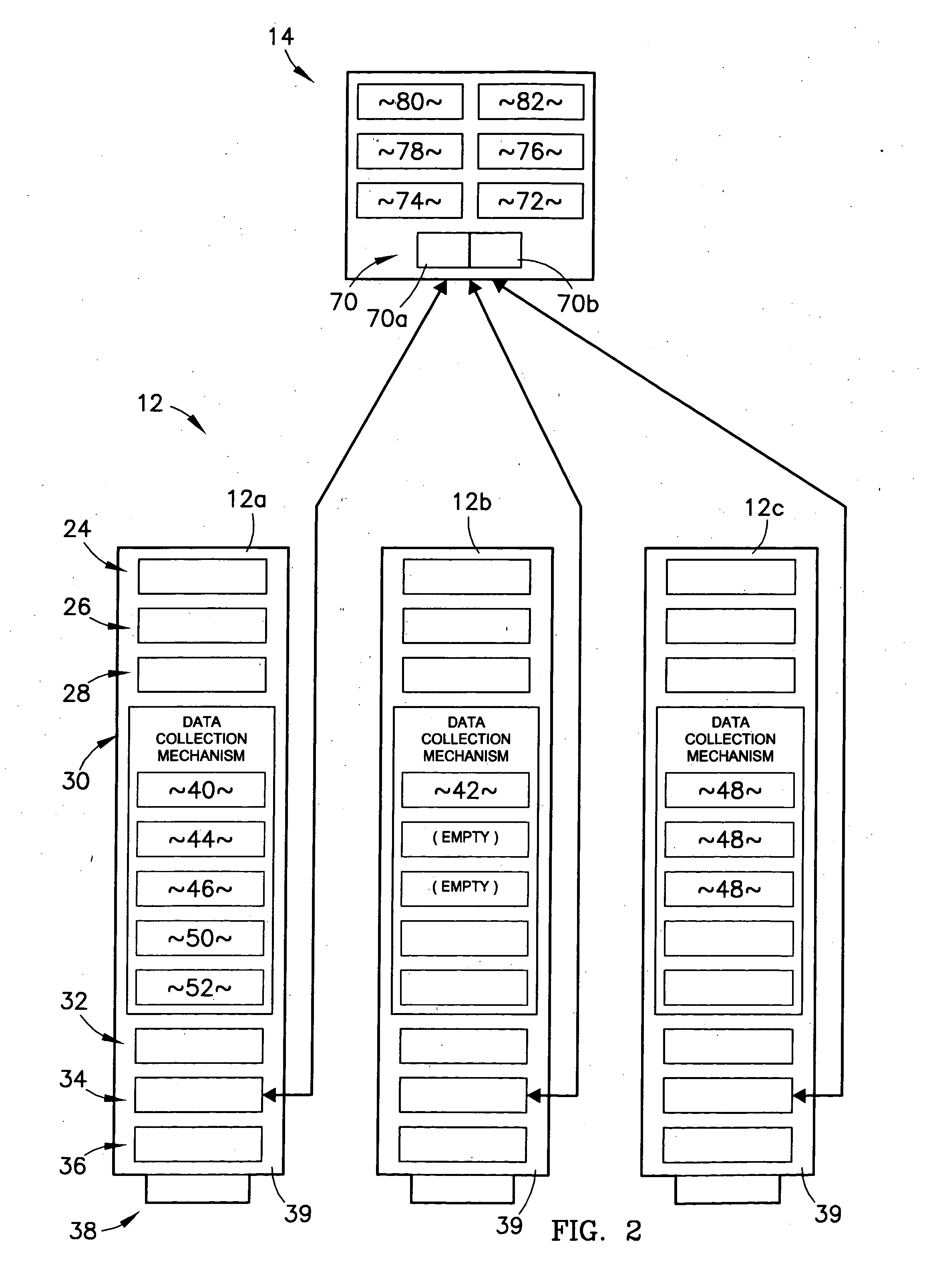These extremely limited devices typically combine detection and identification into a single function by using a very
specific test that can only detect the presence or non-presence of the specific substance and none other.
An expensive and unwieldy collection of these simple devices would be needed in order to monitor or test for the wide variety of substances that might
pose threats to health and safety.
Unfortunately, providing such a collection of devices on a deployable mobile platform suitable for field testing substances whenever and wherever they may be encountered would be difficult and impractical at best.
Furthermore, even if such a large and expensive mobile collection were created, it most likely could not be introduced into a suspect area in a timely manner and without undue risk to its operators.
Furthermore, because these simple devices are often designed for stand-alone operation, integrating their systems, particularly their disparate operating and reporting systems, would be an exceedingly difficult and costly task.
Additionally, being substantially disparate and designed without concern for integration, these simple devices are unable to communicate or cooperate with one another in performing their respective functions.
Thus, a particular detection device of the collection may be engaged in substantial and time-consuming testing while all other devices sit inefficiently idle.
Prior art complex detection devices are generally more broadly capable than the above-described simple devices, but they also suffer from a number of disadvantages.
More specifically, increased capability is typically associated with an increase in
operational complexity, requiring substantial investments in initial and continued training that the complex devices can be used properly and effectively.
Furthermore, the devices require substantial operational control by and interaction with a
human operator either in physical contact or close proximity with the detection device.
It will be appreciated that this necessarily exposes the operator to the substance being tested, thereby requiring the operator to wear extremely cumbersome
protective gear.
This gear, in turn, makes operating any small buttons, dials, or other input or control mechanisms on the device extremely difficult.
Relatedly, a lack of any substantial
automation of the device means that testing can only be performed once the necessary
human operator arrives on the scene, precluding both
continuous monitoring and the fastest possible identification of the substance.
Furthermore, though it may be established that the substance is not one of the particular substances being tested for, actual identification of the substance may not be accomplished.
During this very inefficient and time-consuming procedure, a large number of additional people may be exposed to the threatening substance depending on such factors as wind, rain, other weather conditions;
insect, animal, or human movements; or other vectors.
This inefficient process further delays
initiation of any response to the
threat, and may introduce communication and transcription errors.
Additionally, prior art devices typically do not allow for quick and convenient removal and replacement of malfunctioning or obsolete components.
Relatedly, the devices are typically not customizable with regard to performance, capability, or cost.
Additionally, prior art devices typically have no capability to identify appropriate local, state, or regional contacts for reporting detection of a threatening substance.
Thus, once information has been gathered, it is disseminated, if at all, using a top-down model, which can result in substantial
delay between initial notification of the state or federal authorities and notification of the local authorities who are charged with responding to the threatening situation, and can result in substantial
confusion if the information is misinterpreted or miscommunicated as it is repeated up and down this chain.
Furthermore, local authorities may have particular protocols or policies in place for such reporting that are not available or not followed when notifying them of the
hazard or
threat, thereby further undermining any possibility of a timely response to the situation.
 Login to View More
Login to View More  Login to View More
Login to View More 


